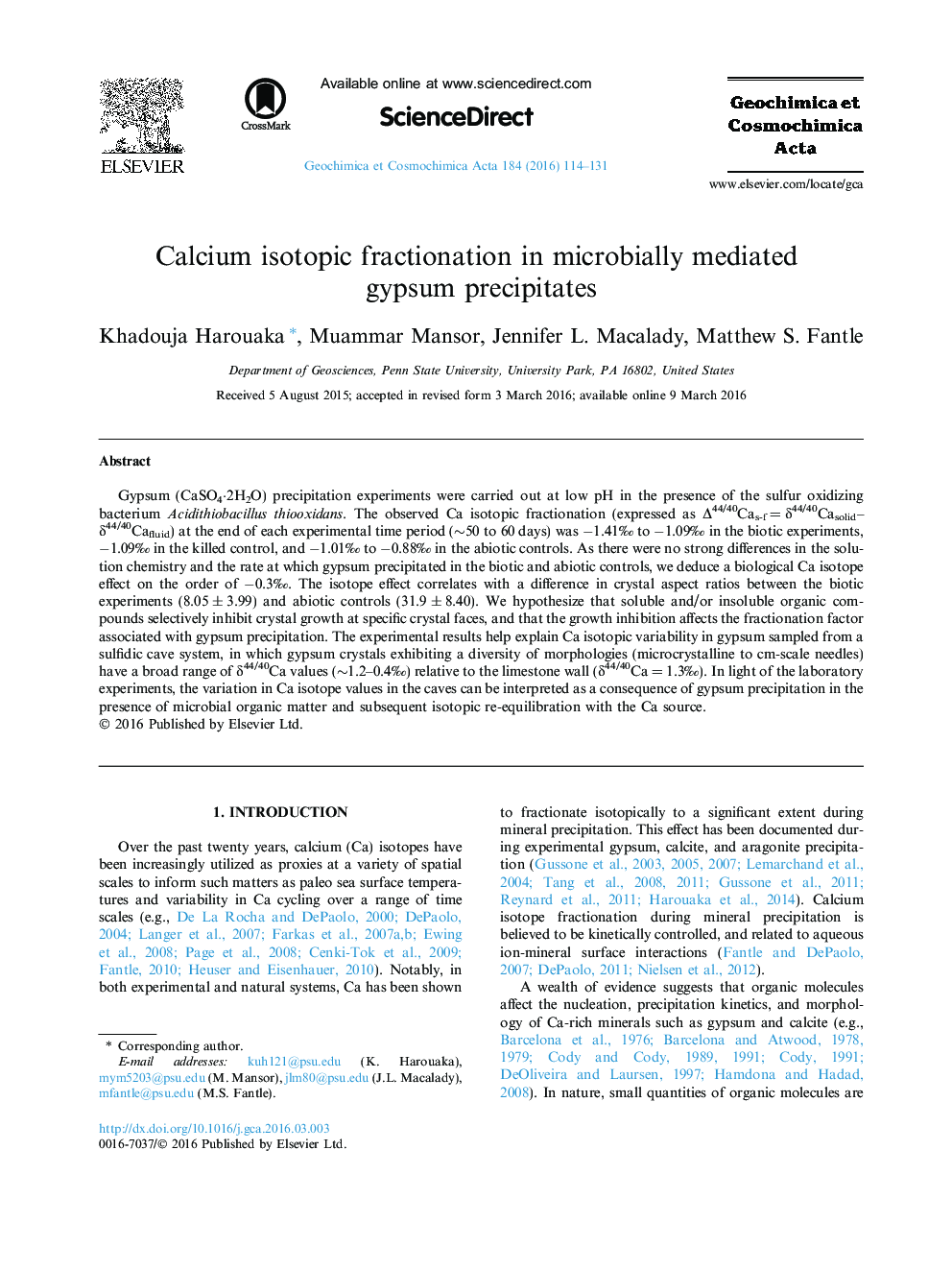| Article ID | Journal | Published Year | Pages | File Type |
|---|---|---|---|---|
| 4701807 | Geochimica et Cosmochimica Acta | 2016 | 18 Pages |
Gypsum (CaSO4·2H2O) precipitation experiments were carried out at low pH in the presence of the sulfur oxidizing bacterium Acidithiobacillus thiooxidans. The observed Ca isotopic fractionation (expressed as Δ44/40Cas-f = δ44/40Casolid–δ44/40Cafluid) at the end of each experimental time period (∼50 to 60 days) was −1.41‰ to −1.09‰ in the biotic experiments, −1.09‰ in the killed control, and −1.01‰ to −0.88‰ in the abiotic controls. As there were no strong differences in the solution chemistry and the rate at which gypsum precipitated in the biotic and abiotic controls, we deduce a biological Ca isotope effect on the order of −0.3‰. The isotope effect correlates with a difference in crystal aspect ratios between the biotic experiments (8.05 ± 3.99) and abiotic controls (31.9 ± 8.40). We hypothesize that soluble and/or insoluble organic compounds selectively inhibit crystal growth at specific crystal faces, and that the growth inhibition affects the fractionation factor associated with gypsum precipitation. The experimental results help explain Ca isotopic variability in gypsum sampled from a sulfidic cave system, in which gypsum crystals exhibiting a diversity of morphologies (microcrystalline to cm-scale needles) have a broad range of δ44/40Ca values (∼1.2–0.4‰) relative to the limestone wall (δ44/40Ca = 1.3‰). In light of the laboratory experiments, the variation in Ca isotope values in the caves can be interpreted as a consequence of gypsum precipitation in the presence of microbial organic matter and subsequent isotopic re-equilibration with the Ca source.
